
How well do you really know your customers? This might sound like a simple question, but every business knows it’s not. Consumers are more informed and selective than ever – and to truly understand them, and their needs, you need the right data.
It’s no coincidence that successful companies are heavily data-driven. Robust customer analytics help to understand complex customer behavior, measure performance, and improve products and services to cater to modern customers. These analytics give you the insight necessary to form strategies, products, and services that your customers will want to engage with.
In this article, we’ll explore the importance and types of customer analytics, how to implement them, and the top tools to consider.
What Is Customer Analytics?
Customer analytics is the process of collecting, analyzing, and contextualizing customer data across several channels, devices, and interactions to make better decisions. These insights support sales, marketing, and product development efforts, and provide the insight necessary to form strategies, products, and services that your customers will want to engage with.
Importance of Customer Analytics
Customer analytics helps businesses turn big problems into manageable solutions. When companies need to understand how their customers behave, analytics decode their actions. This helps companies make better decisions on pricing, promotion, and management.
According to McKinsey, companies that make use of customer analytics are 2.6x more likely to have a significantly higher ROI and are 3x as likely to generate above-average revenue growth than their competitors.
5 Benefits of Customer Analytics
A strong customer analytics process helps you understand who your customers are, how they behave, and how satisfied they are with your company, product, or service experience.
Here are the top five most significant benefits of customer analytics to help you understand how to use them to drive business growth:
1. Increase customer acquisition
Gaining new customers is a crucial part of any business – without customers, there is no business. Effective sales and marketing strategies help acquire new customers, and creating robust, personalized campaigns that capture the right leads is easy with the right data.
2. Reduce customer churn
Staying on top of customer analytics helps reduce customer churn and maintain healthy relationships with existing customers. By studying customer behavior, companies can perform predictive customer analytics to develop strategies that improve customer experience and satisfaction.
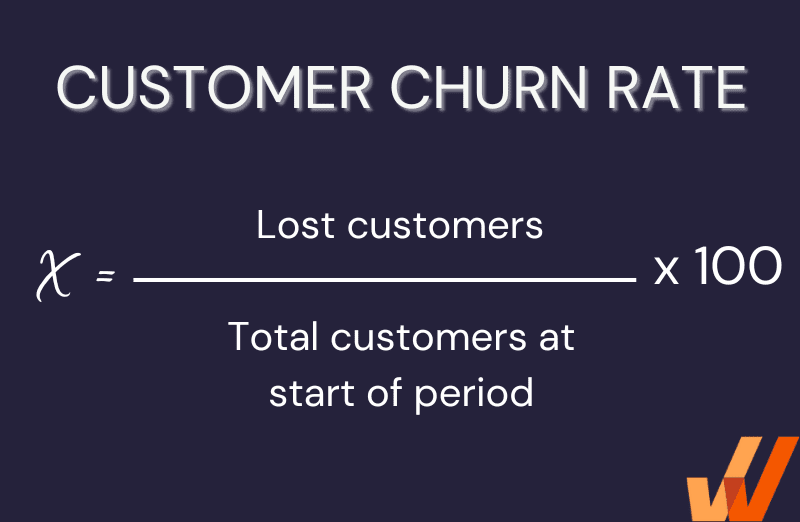
3. Create a more personalized customer experience
Customer analytics can uncover the touchpoints where personalization marketing is more important for customer experience.
When organizations fully embrace integrating customer analytics into decision-making and creating a personalized customer experience, they see an uplift in important KPIs, including:
- Customer lifetime value
- Customer loyalty
- Customer satisfaction
Creating personalized customer content can be daunting, so having accurate data will help drive conversions and engagement.
4. Improve customer engagement
Insights into customer pain points and their biggest roadblocks can equip you to engage with your customers in a more relevant way.
By leveraging data from customer interactions, transactions, and feedbacks, customer engagement analytics works to provide a comprehensive view of the customer journey. Armed with these actionable insights, decision-makers can both engage customers and provide an improved experience overall.
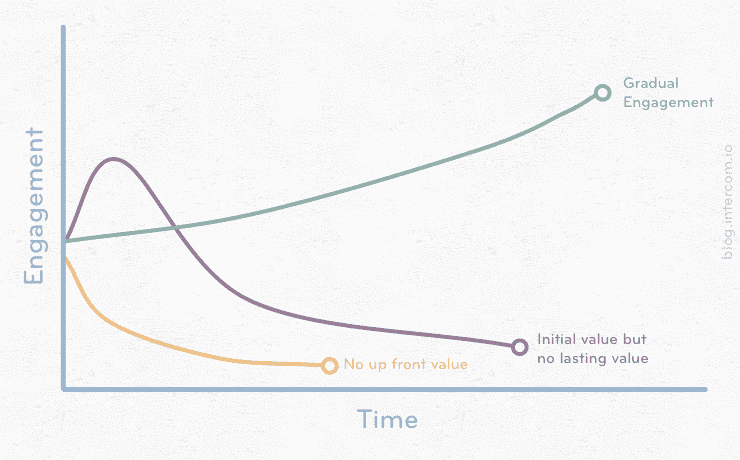
5. Increase sales and profits
The profitability of your business and your ability to grow sales is directly tied to the quality of your customer base and their experience with the product or service. By analyzing your existing customers and discovering what they have in common, you can better market your offerings and continue to grow profits.

MCKINSEY
5 Types of Customer Analytics
Customer analytics are great tools for businesses to understand customer needs and tailor services accordingly. There are five main categories of customer analytics and knowing each one of them can prepare businesses for various challenges in the market:
1. Customer journey
Customer journey analytics focus on understanding the customer’s interactions with your brand from the initial research phase to the point of purchase. That’s why they may involve a mix of data points from several different interactions.
For example, organic and non-organic traffic to your product pages contains insight into the initial stages of the customer journey: research and information gathering. Shopping cart abandonment rate can tell you how many customers leave their shopping cart before completing a purchase.
2. Customer experience
Customer experience analytics reveal how your customers feel when they interact with your brand. Customer support like time to resolution, and customer onboarding like user adoption and time to value, play a vital role in customer experience analytics. If you’re using a platform to track support tickets or email and live chat, you’ll probably have easy access to customer support metrics.
3. Customer engagement
Customer engagement analytics can be divided into two categories: engagement with your product/service and engagement with your brand. Customer success teams may track user engagement with your product, but engagement marketing is also common: investigating and influencing the relationship of your brand with interested customers.
Customer engagement is relevant to every stage of the customer journey, so, naturally, the two types of customer analytics will overlap.
4. Customer lifetime
Customer lifetime also overlaps with customer journey and customer experience. What sets them apart is the Customer Lifetime Value (CLTV) metric, which indicates how much revenue you can expect from a single customer throughout the entire business relationship. You can use CLTV in different ways to inform your decisions.
For example, if you see your CLTV decline, that may reveal an issue with repeat customers. If it’s lower than what you spend on acquisition and marketing campaigns, then you’re probably spending too much without any gain or return.
5. Customer loyalty and retention
Customer loyalty and retention measures how loyal your customers are. How many of your buyers are repeat customers? What percentage of your customers churn? These metrics tell you whether or not your customers like you more than other similar businesses.
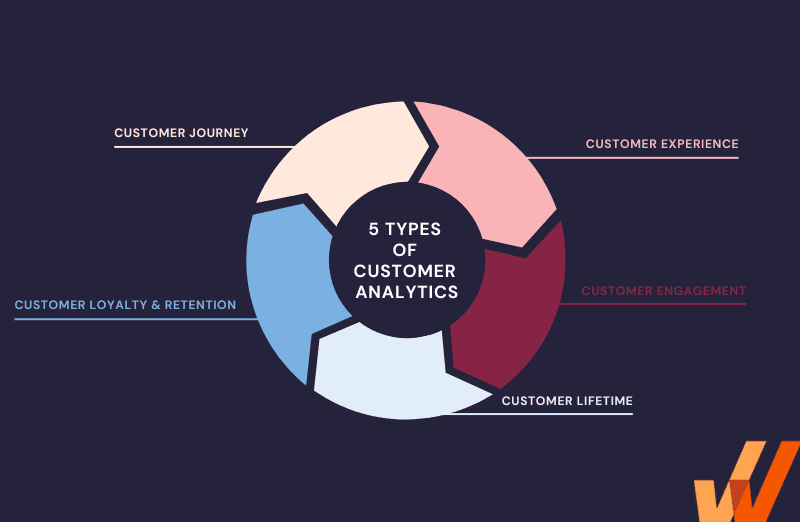
Questions Customer Analytics Help You Answer
Customer analytics platforms can answer questions on anything that can be measured or tracked, and the answers they provide are only as good as the questions asked of them.
Here are some examples of common customer analytics questions:
1. Customer acquisition
- Which channels drive the most new customers?
- What is the most common customer journey?
2. Generated revenue
- What are the most profitable revenue channels?
- Which user persona is the most profitable?
3. Customer retention
- Where do you lose the most customers? Why?
- What behaviors are linked to high retention rates?
4. Customer engagement
- What features resonate most with which customers?
- What is the optimal experience for users?
How to Implement Customer Analytics
The success and sustainability of any business are dependent on having customers, and to acquire, grow, and retain customers, it is essential to know their needs, what they like, and what they dislike.
The more businesses understand their customer’s buying behavior and lifestyle, the better positioned your company is to make predictions that are targeted and meaningful for the customer. Targeting customers with the right product at the right time and with the right price improves the overall customer experience and journey.
Here are five tips for implementing a powerful customer analytics system for your organization.
1. Outline your goals
Before data collection, you should have a clear idea of what are you trying to achieve, and what problems you are going to solve for your company or sales team. These goals will take your analysis to the next level.
2. Determine your performance metrics
Customer analytics metrics help your business understand how they are performing and whether you’re taking the right path towards your customer experience goals.
There are several real-time dashboards today that track key performance indicators (KPIs). These dashboards help businesses make key decisions promptly, thereby increasing customer sales and revenue.
3. Measure engagement
Engaged customers are a lifeline for your business, and it’s difficult to deliver good experiences unless you know the art of engagement. You need the right tools and a solid strategy to successfully measure customer engagement.
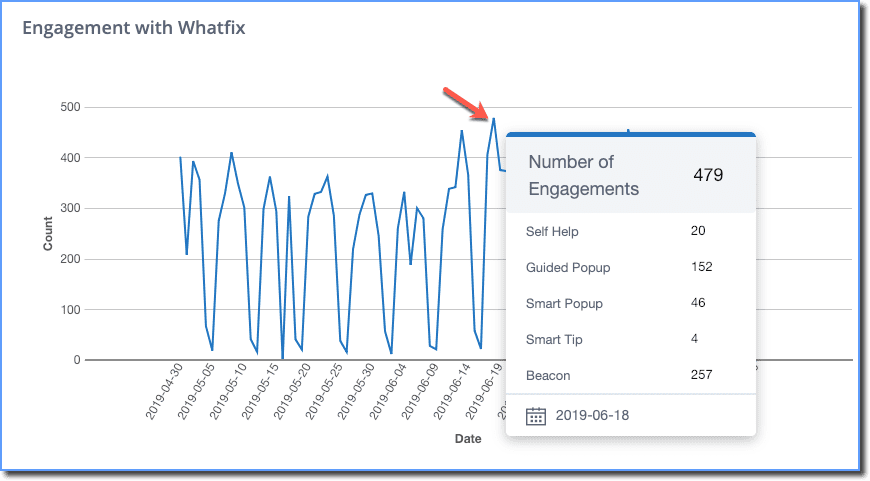
4. Validate your data
Data validation refers to the process of ensuring data accuracy and quality. It can be implemented by building several checks into your systems or reports to ensure consistent input and storage of data.
5. Use the right tools
Your customer analytics tech stack will vary depending on your user and business needs as well as your data sources. Investing in intuitive, user-friendly tools that integrate well with each other and your product/service can cut down on the time and costs involved in onboarding.

5 Customer Analytics Best Practices
Here are five tips to help you leverage your customer analytics:
1. Make predictions and test solutions
Don’t stay stagnant in the diagnostic phase of your customer analytics implementation – make predictions and choose different solutions to test out. Especially when it comes to customer engagement, you may need to evaluate various options to find out what sticks.
2. Approach from an omnichannel perspective
Look at customer interactions from an omnichannel point of view. There are software that provide a single customer view, but you should also look into data from a range of different and relevant sources.
Percentage of customers that expect a seamless experience and desire faster responses, count on omnichannel support, and have less attention to spare
3. Use qualitative and quantitative data
Your customer analytics is only as good as the data it relies on. It’s important to connect the dots between data points and have clarity on the data you want to analyze. The data you choose to analyze can then be funneled into a platform that can help organize it in a way that it can be effectively analyzed.
4. Keep data organized
Organizing your customer analytics is all about building robust profiles of your target customer personas.
5. Understand what matters to your customers
Walking in the customer’s shoes helps identify touchpoints to collect data. Every customer interaction has a rich trail of data, from product choices to channel preferences to when and why they want to buy from you, versus the competition. Valuable sources of data include (but are not limited to) mail clicks, in-store visits, online purchases or browsing, and content streaming.
Top 4 Customer Analytics Tools
From website usage to social media engagement, the following tools cover a wide range of features and capabilities:

1. Whatfix
Whatfix Analytics offers actionable data on user behavior within applications, consumption of Help content, and real-time feedback on in-app experiences.
With Whatfix, you can understand key user behavior within your application and identify critical dropoff spots where users need a little extra navigation help with User Actions and Funnels.
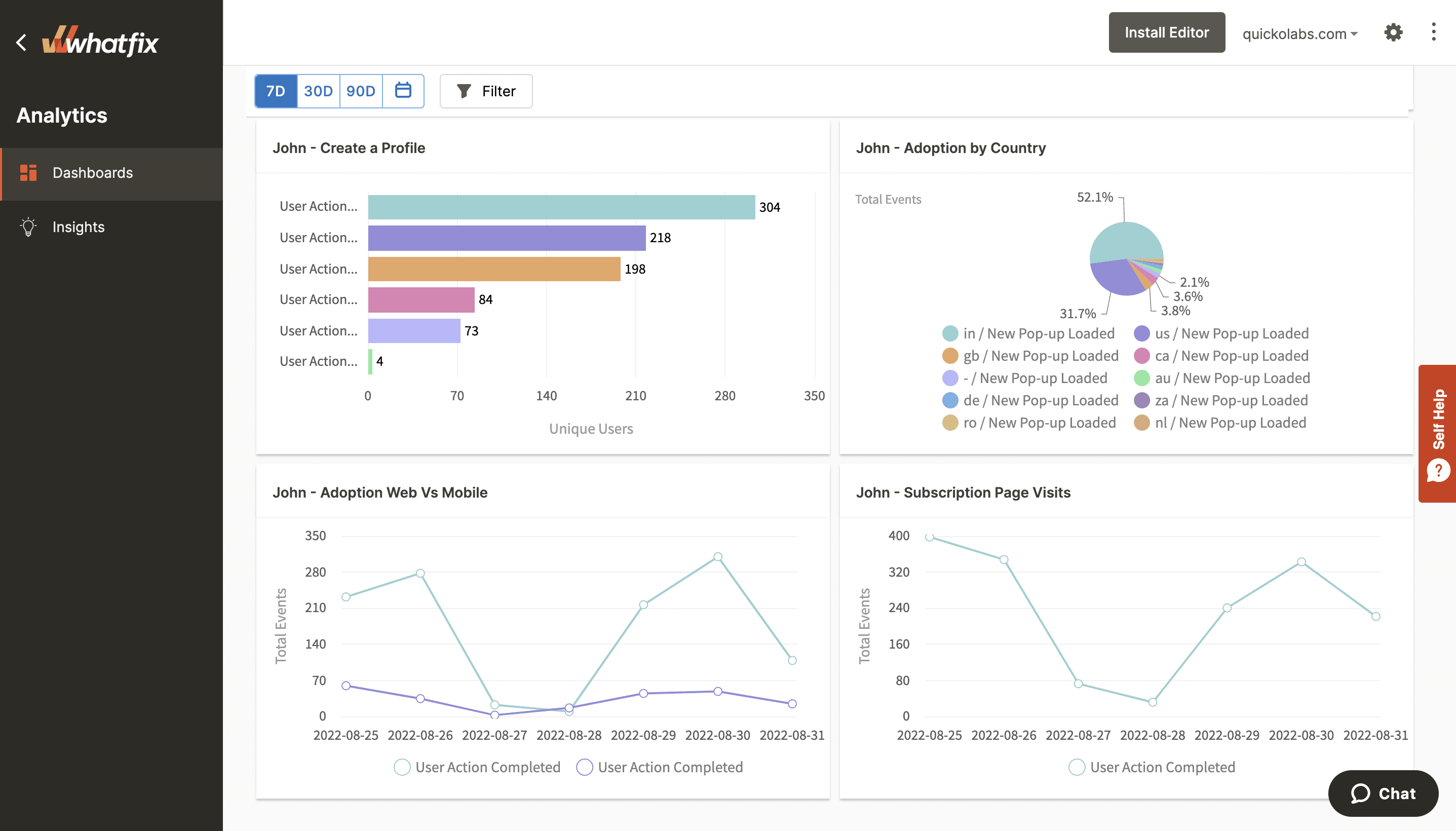
Key features:
- Identify areas where users need help
- Discover opportunities to accelerate adoption
- Track business process completion and feature adoption trends

2. Google Analytics
One of the most well-known and widely used customer analytics tools is Google Analytics. Google Analytics is used by over half of website owners and is a great way to find key customer data points for your website and app.
Website owners assess their marketing performance by creating goals in Google Analytics and see how effective their strategy has been. They can see real-time data of customers on their website or app and analyze what are their main customer acquisition channels. This data can then be converted into reports you can share with your team to make impactful strategy decisions.
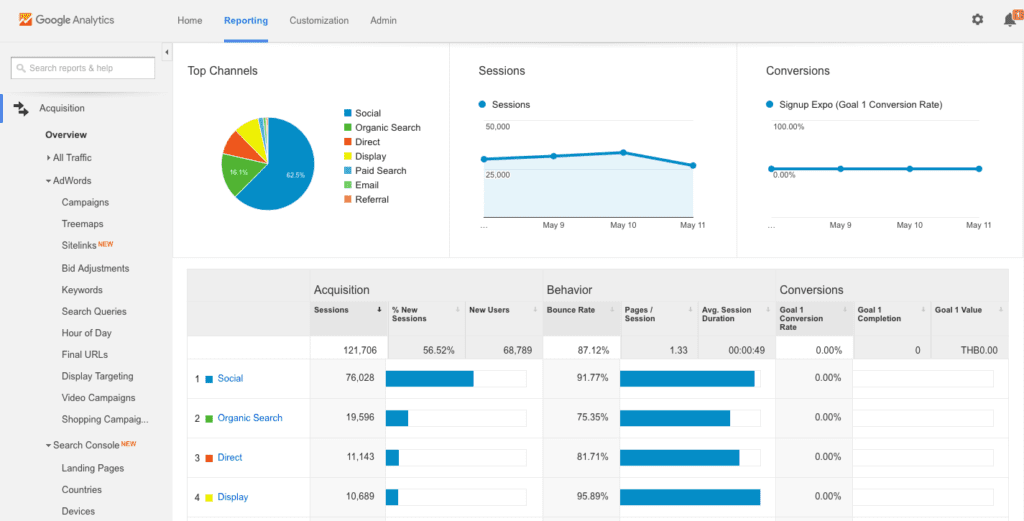

3. Mixpanel
Mixpanel allows you to understand how your customers are interacting with your product, which features they use most often, who are your power users, and other crucial data. Mixpanel Group Analytics lets you calculate metrics at the account or company level, like product adoption, active usage, and retention. This add-on is popular with SaaS companies looking to understand their customers’ usage patterns to drive upsell and prevent churn.
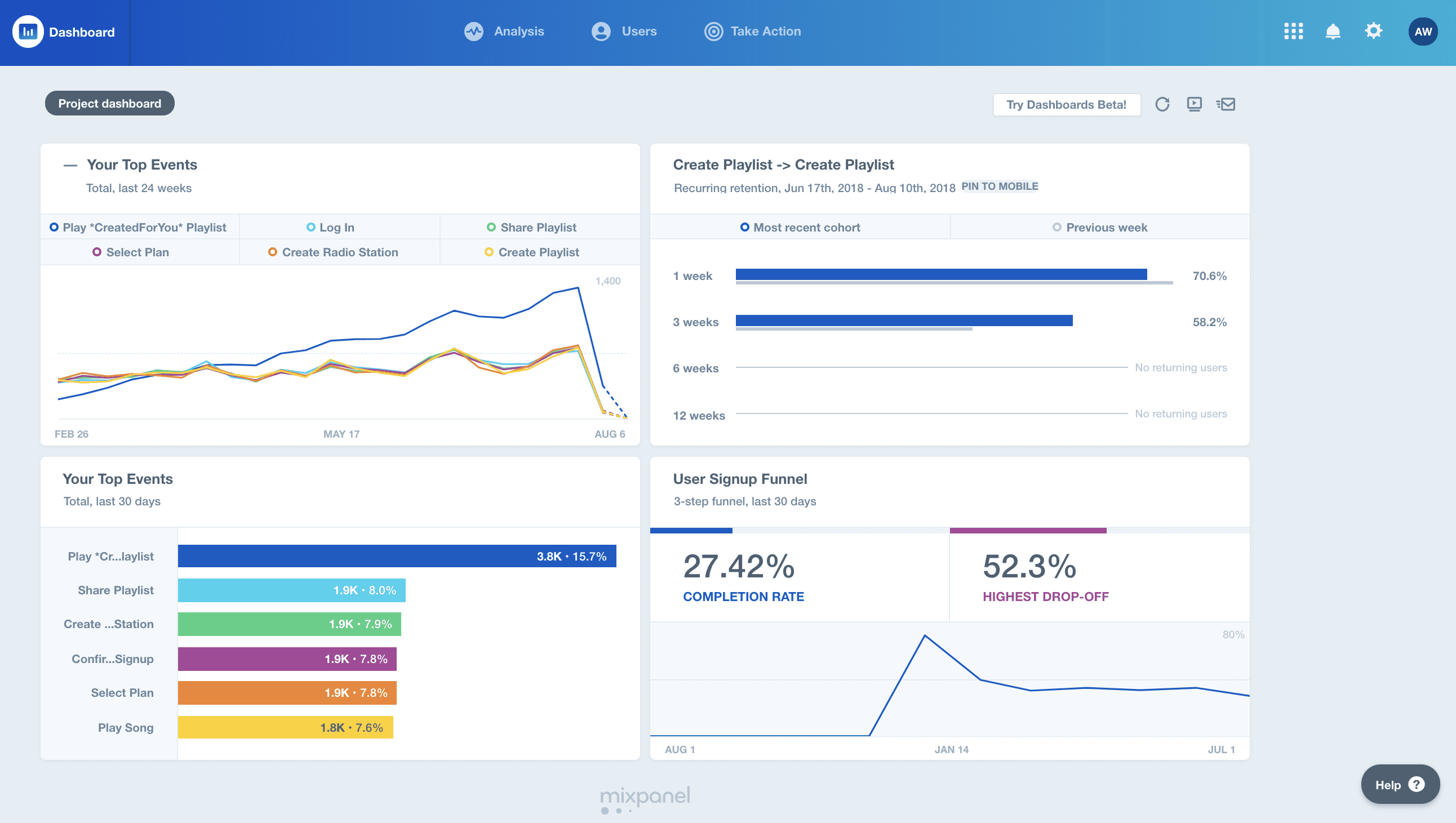
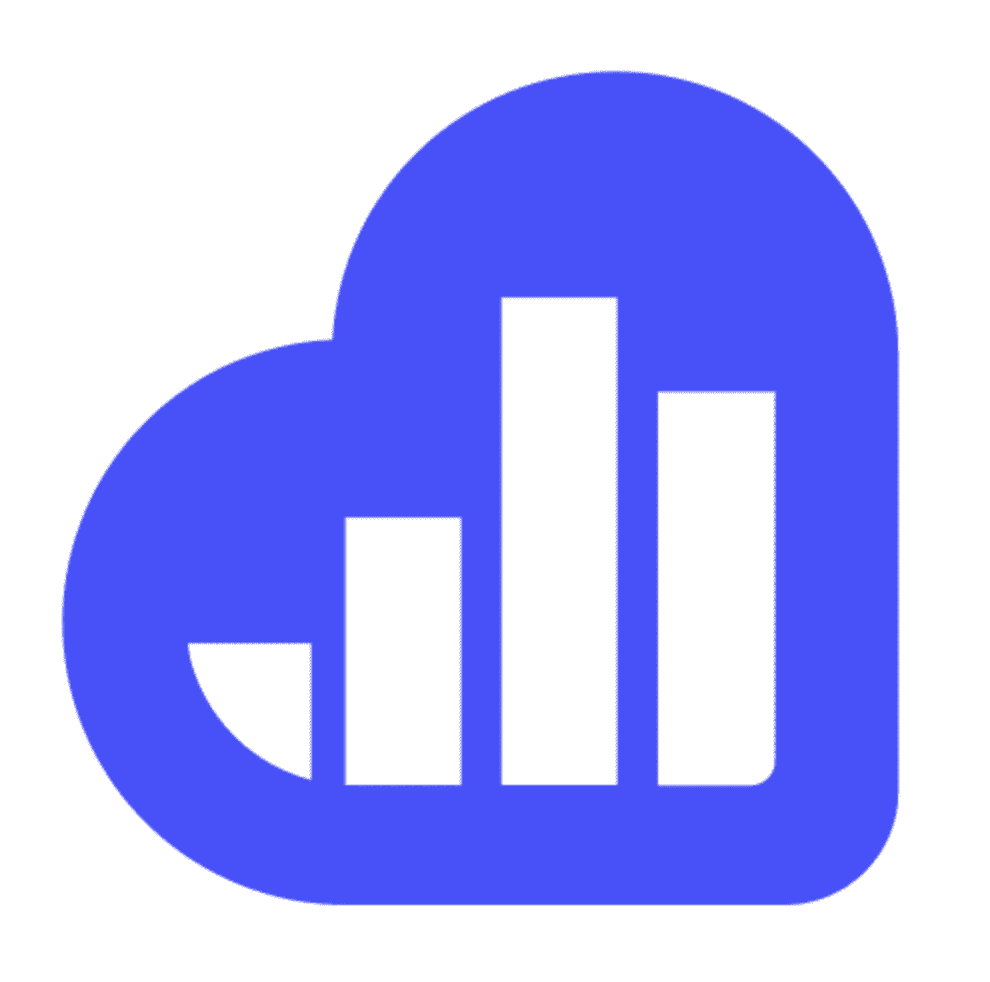
4. Kissmetrics.io
Kissmetrics.io is designed with marketing and sales teams in mind to help understand how visitors are interacting with the website, blog, or app, and then re-engaging them with highly targeted campaigns. You can also see a customer’s journey across multiple devices and discover their drop-off points, and customer segmentation and precision targeting allow marketers to never let a lead slip by their funnel.
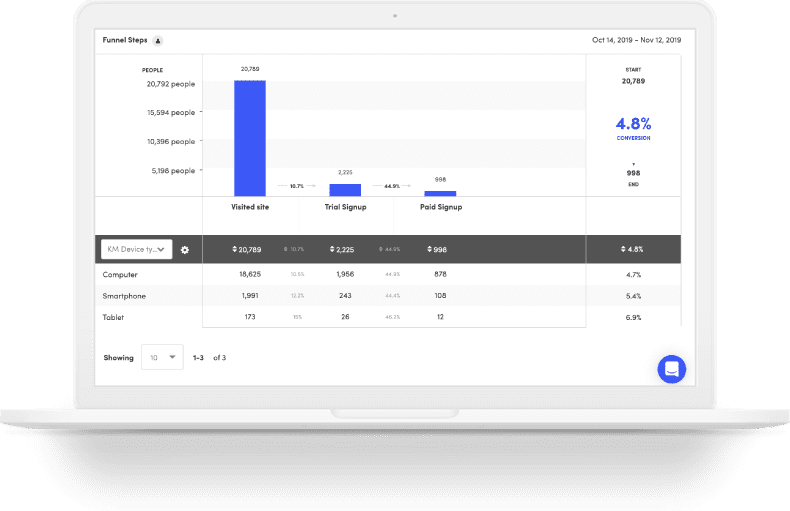
If you don’t know your customer, you’re missing out on a great opportunity. The more you know about the customers who use your products and consume your services, the easier it is to meet their needs – and the sooner you start the process, the better your business could be.
But customer analysis can do more than just drive sales of existing products. By uncovering customer needs, the right customer analysis can help you develop new products and services; ones your customers may not even know they need. The new product lines you develop in this manner could drive sales and profits even more, helping you build an even better business.
Learn more about how Whatfix can empower your customer analytics today.
Thank you for subscribing!





